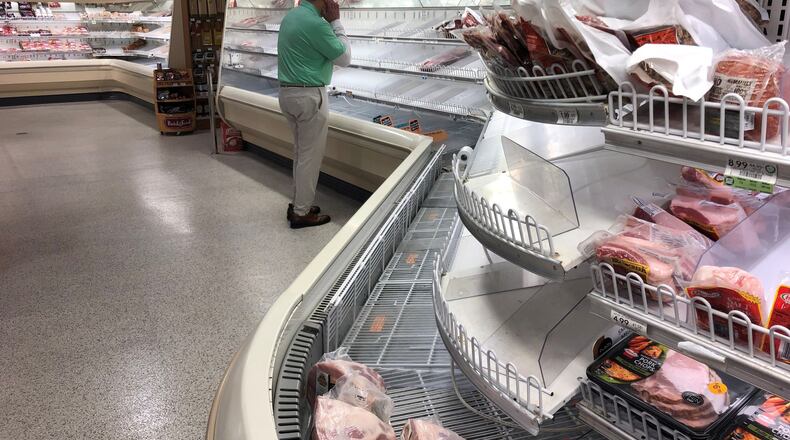It’s not just toilet paper.
The coronavirus has roiled the way that goods get to American grocery markets, and consumers can expect to see "sporadic shortages" for weeks, according to an industry spokesman and local stores.
The problem is national, but it's not a severe production failure as caused by a hurricane or flood, said Doug Baker, vice president, industry relations for FMI, the food industry association.
» Read about why metro Atlanta is experiencing a shortage of toilet paper in this AJC story
"The good thing is, there's no critical disruption in the supply chain," he said. "But there are sporadic outages across the board."
Local stores are reluctant to delve into shortfalls, saying only that they are working to eliminate them. However, the shortages are clear to Atlanta shoppers.
The shelves that held paper goods were the first to empty during the frantic buying of mid-March. Those items may be back now – depending on the day and hour and store.
But shoppers also have seen empty shelves for many frozen goods, for pasta sauce, for rice, for flour, even for yeast, in addition to cleaning items like bleach and disinfectant wipes. When they’re restocked, they often quickly sell out again.
For the most part, the problem is not the amount of food and goods being produced. The one exception is meat, where outbreaks of the coronavirus have closed several plants in the Midwest.
But there are other problems:
— Consumers are home in dramatically higher numbers.
So tens of millions of households are buying from local stores for meals and needs that had been served away from home in pre-crisis days.
Prior to the crisis, 54 cents of every $1 spent on food was being spent away from home, Baker said. "Now, for many people there are no lunches at the office, no going out to dinner Friday night, no college kids going out for pizza."
— Production that had shipped to restaurants and offices now must go to local grocery stores.
That means a need to change packaging, labeling and shipment methods. It also often means changes in the quality – consumer standards are often higher than those in an office.
Companies have been adding production lines and modifying their products, while sometimes changing processes to keep workers safe.
“It doesn’t happen overnight,” Baker said.
— Some production only happens in season, like that of frozen and chopped vegetables. They are picked in spring and packed for the entire year, Baker said. With more consumers in stores, buying more, the last year's packed goods have been largely depleted.
“You’ll continue to see sporadic shortages there, at least until we get through this pack season,” Baker said.
— The buffer between manufacturing and stores has largely disappeared.
Warehouses usually hold several weeks of inventories known as “safety stock,” so that shelves are not depleted by a few days of urgent buying or a supply cut-off caused by an unusual event like a flood or hurricane.
The problem this time was national – and more extreme – starting with the panic buying of mid-March.
"In a two-week time frame, they went through 12 weeks' worth of safety stock," Baker said. "The supply chain is still trying to catch back up."
About the Author
Keep Reading
The Latest
Featured



